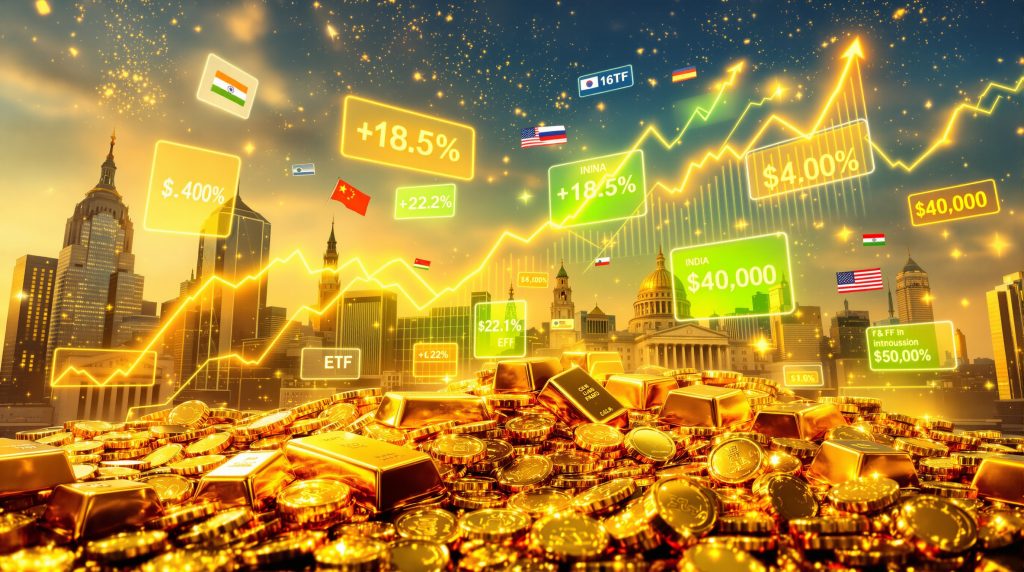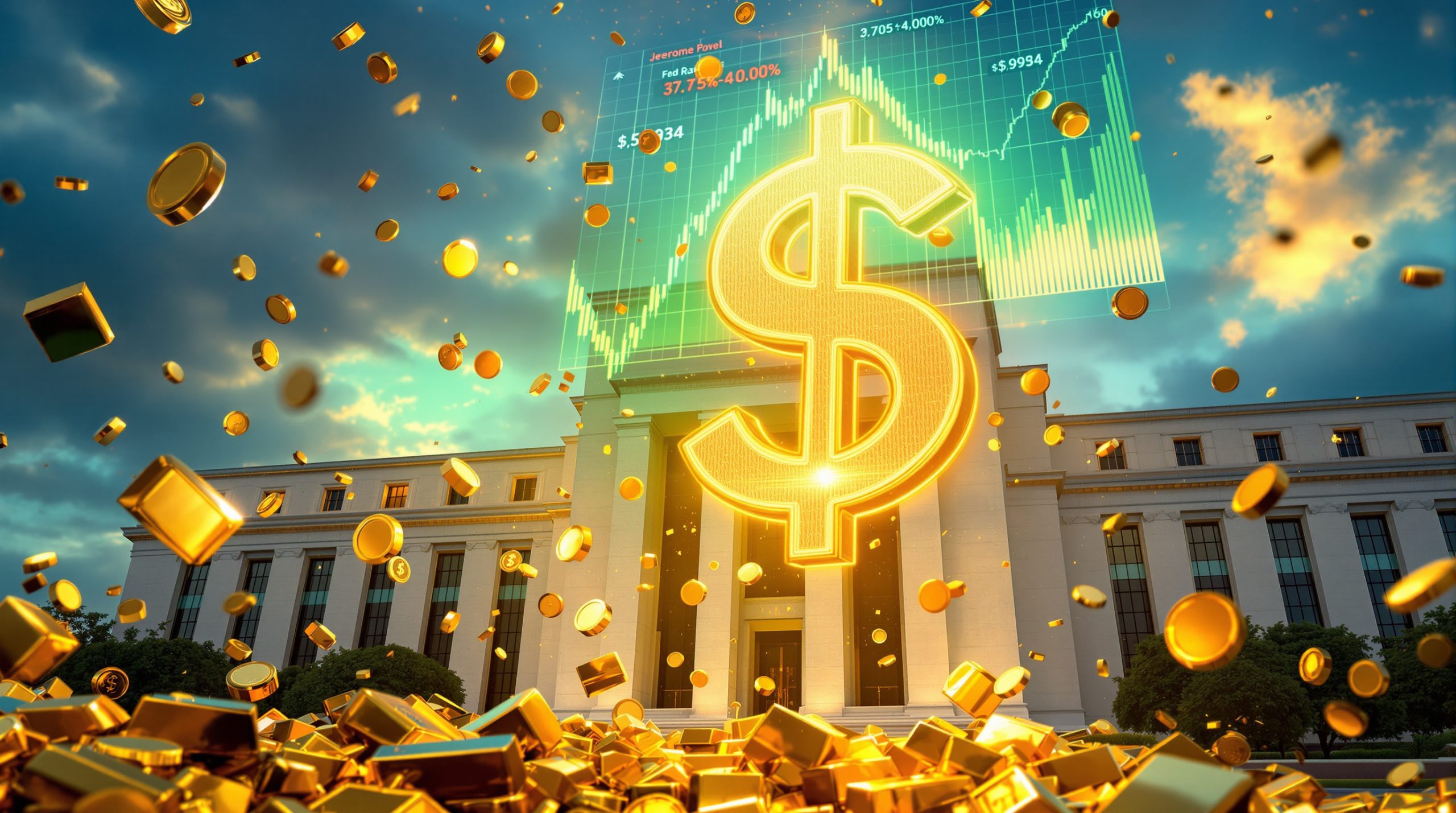Understanding the Current Gold Investment Landscape
Gold investment demand has emerged as the dominant force shaping precious metals markets throughout 2025, fundamentally altering traditional pricing mechanisms. Unlike commodities driven primarily by industrial consumption, gold's valuation stems from investor psychology regarding economic stability and wealth preservation strategies.
Physical investment channels currently experiencing significant growth include bullion bars, coins, exchange-traded funds, futures contracts, and central bank reserve accumulation. This multi-channel approach reflects diverse investor preferences and risk tolerance levels across different market segments.
Investment Market Structure:
- Physical bullion purchases through dealers and mints
- ETF participation via major fund vehicles
- Derivative market exposure through futures and options
- Institutional allocation programs and mandates
According to market analysis, long-term gold pricing operates on fundamentally different principles than shorter-term movements. Physical investment demand serves as the primary determinant for sustained price trends, whilst derivative markets influence intermediate-term fluctuations based on underlying physical market conditions.
Investment demand psychology, particularly for gold and silver, depends entirely on investor attitudes regarding economic and political conditions rather than traditional supply-demand calculations.
This creates a hierarchical market structure where physical markets establish foundational pricing while derivatives provide tactical positioning opportunities for different investor cohorts.
Economic Uncertainty Driving Unprecedented Investment Flows
Multiple converging factors have created an exceptional environment for precious metals investment throughout 2025, with economic disruption serving as the primary catalyst for increased allocation strategies. Furthermore, the gold market price surge demonstrates how uncertainty translates into tangible market movements.
Government Dysfunction Impact:
The U.S. government shutdown beginning October 1st has created measurable economic drag, with estimates suggesting losses of 0.1 to 0.2% of annual real economic output for each week of closure. After approximately five weeks of government closure, the cumulative impact approaches 1% reduction in annual GDP for the United States.
This disruption has interrupted official government information and statistics flow, increasing uncertainty levels that were already elevated throughout 2024 and early 2025. The absence of reliable economic data has forced investors to rely on non-governmental sources and speculation regarding economic conditions.
Federal Reserve Policy Signals:
The Jackson Hole conference in Wyoming marked a critical turning point for precious metals markets when the Federal Reserve signalled growing concern about economic weakness and indicated willingness to lower interest rates more aggressively than previously anticipated. This policy pivot directly triggered increased investment demand across precious metals markets.
Following these signals, markets experienced surge in both short-term and long-term investment demand, particularly for gold and to some extent silver. However, analysts continue to debate whether gold as an inflation hedge remains effective in current market conditions. The buying activity concentrated in futures markets, forward markets overseas, options markets, and exchange-traded funds.
Political Environment Assessment:
Current analysis indicates worsening economic and political environments both domestically within the United States and internationally. However, the specific trajectory remains unclear, creating ongoing financial market uncertainty that sustains investor interest in precious metals as portfolio hedges.
This uncertainty environment keeps long-term investors engaged with gold and silver whilst potentially stimulating additional waves of short-term buying from non-traditional precious metals investors seeking portfolio diversification or momentum exposure.
Analyzing the Historic Price Breakthrough Above $4,000
Gold's remarkable price movement from approximately $3,400 per ounce in early September 2025 to peaks near $4,400 per ounce represents one of the most significant precious metals rallies in recent years, reflecting fundamental shifts in investor behaviour and market participation. The all-time high gold analysis provides deeper insights into these unprecedented movements.
Price Movement Timeline:
| Time Period | Price Level | Market Dynamics |
|---|---|---|
| Early September 2025 | ~$3,400/oz | Stable baseline trading |
| Peak (Mid-October) | ~$4,400/oz | Maximum momentum participation |
| Early November 2025 | ~$3,988/oz | Consolidation around $4,000 threshold |
The approximately $1,000 price movement represents roughly 29% appreciation within a span of several weeks, followed by a $400 retracement as short-term participants reduced positions.
Non-Traditional Investor Participation:
A significant portion of the price movement stemmed from non-traditional gold and silver investors entering markets based on momentum signals rather than fundamental analysis. These investors, who historically avoided precious metals, participated after observing sustained price increases that had been building since January 2025 and accelerated following Federal Reserve policy signals.
The buying activity from this cohort concentrated in specific market segments:
- Futures markets for leveraged exposure
- Forward markets overseas for international participation
- Options markets for structured risk management
- Exchange-traded funds for simplified access
Interestingly, traditional gold and silver investors, particularly silver specialists, used this momentum to reduce positions, suggesting divergent strategies between established precious metals investors and newcomers seeking trend exposure.
What Drives Market Consolidation Patterns?
Following the sharp rise to peaks approximately three weeks prior to early November, gold experienced significant correction and subsequently entered consolidation phase around the psychologically important $4,000 threshold. This consolidation reflects markets awaiting directional catalysts whilst maintaining elevated price levels compared to pre-September baselines.
Silver demonstrated parallel movements, rising from approximately $38-39 per ounce to $54 per ounce before retreating to approximately $47.50 per ounce, maintaining similar percentage moves and timing patterns relative to gold. According to the World Gold Council's Q3 2025 investment report, this pattern reflects global shifts in precious metals allocation strategies.
Current Market Positioning and Investor Sentiment
Market analysis indicates that investors overall continue expecting higher precious metals prices, though timing and magnitude remain key uncertainty factors. Short-term position adjustments have occurred, with approximately 10% reduction in short-term investor long positions in gold and lesser reductions in silver positions.
Range-Bound Trading Analysis
Gold currently trades on either side of $4,000, establishing this level as critical technical reference point. The consolidation pattern suggests markets await clear directional signals before committing to sustained moves above or below this threshold.
This consolidation phase represents natural market behaviour following significant price movements, as different investor cohorts reassess fundamental conditions and position sizing. The maintenance of elevated price levels indicates underlying gold investment demand remains supportive despite reduced speculative participation.
Platinum and Palladium Market Dynamics:
Platinum and palladium markets experienced similar investor-driven price movements, though with different fundamental drivers. Platinum rose sharply beginning in June 2025 following bullish marketing information releases, reaching $1,540 per ounce, whilst palladium traded near $1,415 per ounce.
These metals demonstrate how investment expectations regarding automotive demand and supply conditions can drive prices independent of immediate physical market changes. Investor positioning based on anticipated supply disruptions or demand increases created significant price appreciation even without corresponding fundamental shifts.
Investment Strategy Implications for Market Participants
Current market conditions present complex decision-making environments for different investor categories, from institutional portfolio managers to individual investors seeking precious metals exposure. In addition, the gold price forecast suggests continued volatility ahead.
Long-Term vs. Short-Term Positioning
The distinction between fundamental investment demand and speculative positioning has become particularly relevant following recent price movements. Long-term investors focused on economic uncertainty and wealth preservation continue supporting precious metals markets, whilst short-term participants adjust exposure based on momentum and technical factors.
Market Access Considerations:
Different investment vehicles provide varying exposure characteristics:
- Physical bullion offers direct ownership but requires storage solutions
- ETFs provide liquid exposure without storage requirements
- Futures contracts enable leveraged participation with higher risk profiles
- Mining equities offer indirect exposure with additional operational risks
Risk Management Approaches
Current market volatility requires careful position sizing and risk assessment. The potential for prices to move both higher and lower over different time periods demands flexible strategies rather than directional bets based on single scenarios.
Successful precious metals investment requires understanding that markets can experience significant declines followed by reversals to new highs, or vice versa. This temporal complexity necessitates sophisticated risk management rather than simple buy-and-hold approaches.
Future Market Outlook and Catalysts
Several factors will likely influence precious metals markets as economic and political conditions continue evolving throughout the remainder of 2025 and into 2026. Furthermore, implementing effective gold investment strategies becomes crucial during uncertain periods.
Data Release Implications
The eventual reopening of the U.S. government will bring additional uncertainties regarding data releases and economic information flow. Questions remain about whether accumulated data will be released gradually or in large batches, creating potential market volatility as investors process delayed economic indicators.
Political Calendar Events:
Gubernatorial elections in Virginia and New Jersey may influence congressional willingness to negotiate government reopening terms. These political developments could affect market confidence and uncertainty levels that currently support precious metals investment demand.
Economic Weakness Indicators:
Non-governmental economic indicators continue showing signs of weakness, whilst Federal Reserve responses suggest acknowledgment of deteriorating conditions despite limited official data availability. This combination maintains elevated uncertainty levels supporting precious metals investment interest.
International Developments
Global economic and political conditions appear to be worsening alongside domestic U.S. challenges, creating multiple uncertainty sources that could sustain or increase precious metals investment demand from international investors seeking stability and wealth preservation. The State Street Global Advisors outlook suggests institutional interest remains strong.
Technical Market Structure and Price Discovery
Understanding how precious metals markets establish prices requires recognising the relationship between physical markets and derivative trading venues.
Physical vs. Paper Market Dynamics
Physical markets determine longer-term price trends through actual supply and demand for metal, whilst futures, options, and forward transactions influence shorter-term price movements. However, derivative market activity bases its pricing on underlying physical market conditions rather than operating independently.
This creates layered price discovery where:
- Physical investment demand establishes fundamental price direction
- Derivative markets provide intermediate-term price adjustments
- Speculative activity creates temporary price distortions
- Arbitrage mechanisms connect different market segments
Market Participant Segmentation:
Different investor types utilise different market access methods based on their investment objectives, risk tolerance, and operational capabilities. Understanding these preferences helps explain price movements and market behaviour patterns.
Traditional precious metals investors often prefer physical ownership or established ETF vehicles, whilst non-traditional investors may gravitate toward futures markets or options for tactical exposure without long-term commitment requirements.
Investment Demand Sustainability Factors
The durability of current elevated precious metals prices depends on whether underlying investment demand drivers persist or diminish over time.
Fundamental Support Mechanisms
Economic uncertainty, political instability, and monetary policy concerns provide foundational support for precious metals investment demand. These factors operate independently of short-term speculative activity and tend to persist until underlying conditions improve significantly.
Cyclical vs. Structural Demand:
Current investment demand reflects both cyclical factors (government shutdown, election uncertainty, Federal Reserve policy shifts) and structural factors (long-term economic instability, geopolitical tensions, currency debasement concerns).
Structural factors provide more durable price support, whilst cyclical factors can reverse more quickly based on changing conditions.
Investor Education and Awareness
The recent influx of non-traditional investors into precious metals markets may create lasting changes in portfolio allocation strategies even after current uncertainty factors resolve. Exposure to precious metals performance during uncertain periods can influence long-term investment approaches.
Disclaimer: This analysis contains forward-looking statements and market predictions based on current conditions. Precious metals prices can be volatile and may decline as well as increase. Past performance does not guarantee future results. Investors should carefully consider their risk tolerance and conduct independent research before making investment decisions.
Gold investment demand continues serving as the primary driver of precious metals market performance, with current elevated price levels reflecting genuine investor concerns about economic and political stability rather than purely speculative activity. Whilst short-term price movements remain unpredictable, the underlying factors supporting investment demand appear likely to persist, maintaining elevated interest in precious metals as portfolio diversification and wealth preservation tools.
Ready to Discover the Next Major Mining Breakthrough?
Discovery Alert's proprietary Discovery IQ model delivers real-time alerts on significant ASX mineral discoveries, transforming complex geological data into actionable investment insights that keep you ahead of market movements. Explore how major mineral discoveries have historically generated substantial returns and begin your 30-day free trial today to position yourself strategically in the mining sector.




